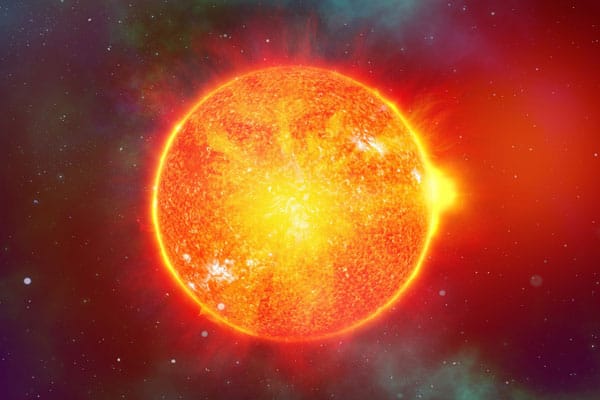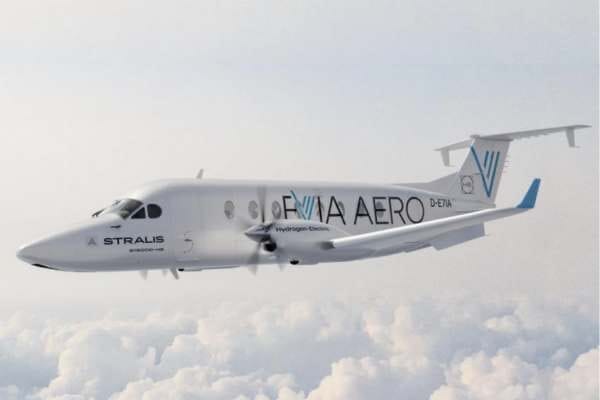Star Power is headed to Earth
Scientists have made what they describe as a ‘Kitty Hawk’ moment for commercial fusion power.

Magnets are powering up in race for new carbon-neutral energy source
Scientists have made a major clean energy breakthrough in what they describe as a Kitty Hawk moment for commercial fusion power.
Fusion power is the energy that powers stars and researchers worldwide have pumped billions into trying to make mini stars on earth to harness this carbon-free energy source.
One method to mimic star power is called magnetic confinement which sees a magnet mimic the gravitational forces created by a star’s mass to hold plasma fuel in place long enough to enable the fusion of hydrogen atoms.
To date, magnet strength has prevented scientists from bringing this type of power out of the research labs and into the power grid – until now.
A new high-temperature superconducting magnet that breaks magnetic field strength records allowing fusion at a time scale not thought possible has been designed and built by Commonwealth Fusion Systems and MIT’s Plasma Science and Fusion Center (PSFC).
They say this breakthrough opens the way for practical, commercial, carbon-free power and are ready to have a pilot plant in operation in 2025.
"It’s really a watershed moment, I believe, in fusion science and technology."
“With the advent of this new technology, there is nothing stopping us from building that first demonstration, the Kitty Hawk moment of fusion, when you see net energy from a system for the first time on earth,” said Dennis Whyte, director of MIT’s Plasma Science and Fusion Center.
“It’s really a watershed moment, I believe, in fusion science and technology.”
Whyte’s hope is that by 2050, the world has tens of thousands of commercial fusion energy plants producing a fifth of the world’s energy without emitting any carbon.
“We’ve been through many different fundamental energy sources. Fusion is going to be the next and last one because it’s literally the power of the universe in our hands,” he says.
“I think we’re going to look back and think about how we got there, and I think the demonstration of the magnet technology, for me, is the time when I believed that, wow, we can really do this.”
Maria Zuber, MIT’s vice president for research and E. A. Griswold Professor of Geophysics, describes fusion as the “ultimate clean energy source”.
The fuel used to create fusion energy comes from water, she says. “The amount of power that is available is really game-changing. The Earth is full of water — it’s a nearly unlimited resource. We just have to figure out how to utilise it.”
With the magnet technology now demonstrated successfully, the MIT-CFS collaboration is on track to build the world’s first fusion device that can create and confine a plasma that produces more energy than it consumes.
That demonstration device, called SPARC, is due to be completed in 2025. SPARC is a testbed to prove the concept before construction of the full-size, power-producing plant, which is expected in the early 2030s.
The tech
In the Sun’s core, the fusion of hydrogen atoms is caused by the intense gravitational pressure and heat which in turn fuses hydrogen atoms together. When two atoms combine, they each lose a little of their mass, which is released as energy. The process is called thermonuclear fusion and is a far safer process than today’s nuclear power plants which are based on nuclear fission – the splitting of atoms rather than fusing them together. The large-bore, full-scale high-temperature superconducting magnet designed and built by startup company Commonwealth Fusion Systems and MIT’s Plasma Science and Fusion Center (PSFC) has demonstrated a record-breaking 20 tesla magnetic field, making it the strongest fusion magnet in the world, according to its creators.
Find out more
The major innovation in the MIT-CFS fusion design is the use of high-temperature superconductors. These enable a much stronger magnetic field in a smaller space, and the design was only made possible by a new kind of temperature superconducting material that became commercially available a few years ago.
This material, made in the form of a flat, ribbon-like tape, makes it possible to achieve a higher magnetic field in a smaller device, equaling the performance of an apparatus 40 times larger in volume by using conventional low-temperature superconducting magnets.
Who funds it
Commonwealth Fusion Systems (CFS) was spun out of the Massachusetts Institute of Technology and is backed by the Italian energy group Eni.
Is it ready to roll
The fusion power demonstration device is due to be completed in 2025. CFS hopes to demonstrate net positive energy by 2025 and to turn on a commercial machine in the early 2030s.





